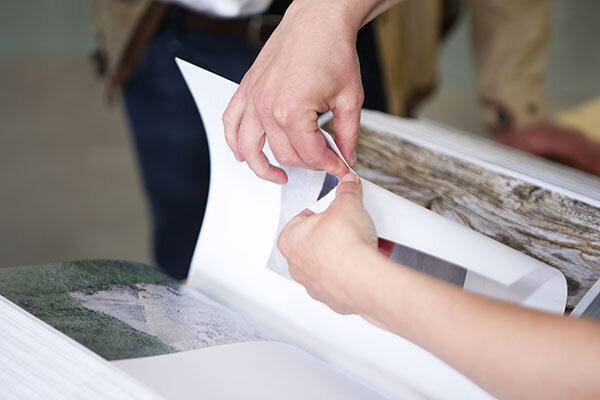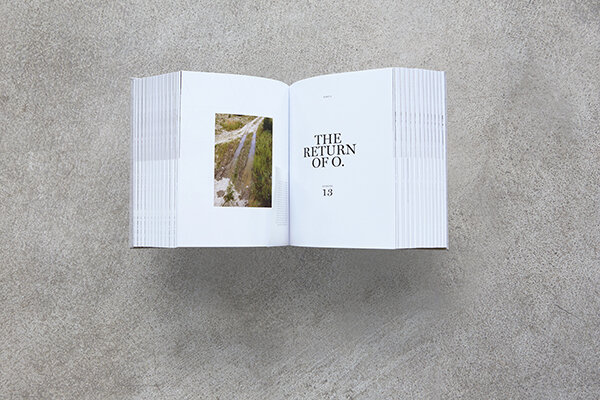The Return of O.
The Return of O. is an art installation inviting the visitor to make a mental journey – unrestricted by time or space – through a repetition of photographic memories from 10 years of travel (2004-2014) compiled in a large book (1.440 pages). This visual odyssey deals with questions that relate to the lifecycle where birth meets dead, prosperity alters crisis, emotional collapse proceeds hyper-productivity. The installation encourages the visitors to activate the artwork by taking part in its fragmentation and distribution: the visitors are asked to select a visual and/or textual fragment of the book and take it with them to new destinations. The project will travel on to other locations so as to further fragment and reshape the book.
This project was realised during a residency at FLACC workplace for visual artists, Genk (BE) and exhibited at WIELS Contemporary Art Centre, Brussels (BE) in June 2014.
The Return of O. exhibited at WIELS Contemporary Art Centre, Brussels (BE), June 2014.
All photos by Celine Callens




The Return of O. exhibited at WIELS Contemporary Art Centre, Brussels (BE), June 2014.


Related publication
Van Brabandt, P. (2014). Annelies Vaneycken -– The return of O. In P. Van Brabandt, K. Ritter, M. Leij, L. ter Haar, S. Van der Linden, M. van Ommeren, A. Lengerer, & A. Roncada. FLACC 14 Werkplaats voor beeldende kunstenaars (pp. 11–22). Genk: FLACC. >> read here
Luuk Nouwen, FLACC, December 2013
Travel plays a prominent role in the work of Vaneycken. She identifies conflicts or problems in particular cultures and makes them visible to a larger audience. Conflicts one only learns about when physically present in the places they affect, and through direct contact with the local inhabitants in the conflict area. Her travels, in this way, have taken her from the favelas in Brazil, to the pastoral communities in the Pyrenees. But what if travel is temporarily made impossible? How can one deal in a meaningful way with the information and experiences one has? The artist explores the conflict between the daily grind of life, transience, quietude, immobility, and the ever-present hunger for innovation and progress, on the basis of the trips she has made in the last ten years. She draws a parallel with Odysseus, who after his victory over Troy took a 10-year journey home. A journey full of adventures that, if anything, made him more human. How can any kind of order be brought to this experience, its essence made apparent? How does the journey affect one as a person? The artist, in her book, tries to combine a number of ordering systems in an attempt to understand in what way, and to what extent, her childhood travels have shaped her. In this way, she tries to answer the question why travel is so important in her practice as an artist and, similarly, how she can approach this given when she will have ceased travelling, temporarily or otherwise.

